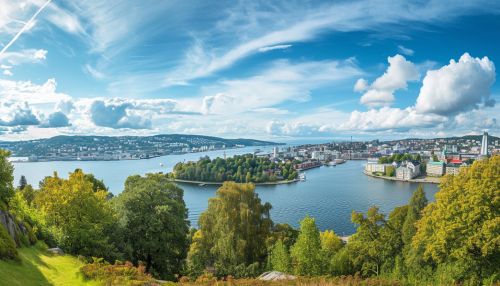Oslo
Geography
Oslo is the capital city of Norway, and also the most populous city in the country. It is located in the southeastern part of the country, at the northernmost end of the Oslofjord, which is populated by numerous islands. The city is spread over 480 square kilometers, and is divided into 15 boroughs.


History
Oslo's history dates back to around 1000 AD, making it one of the oldest capitals in Scandinavia. The city was originally known as Ánslo, and was founded by King Harald Hardrada. The city became the capital of Norway around 1300 AD, but lost its status as capital during the union with Denmark. It regained its status as the Norwegian capital in 1814 when Norway gained independence from Denmark.
Economy
Oslo is the economic hub of Norway and is one of the wealthiest cities in the world. The city's economy is largely based on the maritime industry, technology sector, and the oil and gas industry. Many of the largest Norwegian companies are headquartered in Oslo, and the city also hosts the headquarters of many international companies.
Culture
Oslo is known for its rich cultural scene, with a large number of festivals, museums, and art galleries. The city is home to the National Theatre, the Oslo Opera House, and the Munch Museum, which houses the works of the famous Norwegian painter Edvard Munch.
Education
Oslo is a major educational center in Norway, with several universities and higher education institutions. The largest of these is the University of Oslo, which is the oldest and largest university in Norway.
Transportation
Oslo has a well-developed public transportation system, which includes buses, trams, metro (T-bane), and ferries. The city is served by two airports: Oslo Airport, Gardermoen, which is the main international airport, and Sandefjord Airport, Torp, which is used by low-cost carriers.
